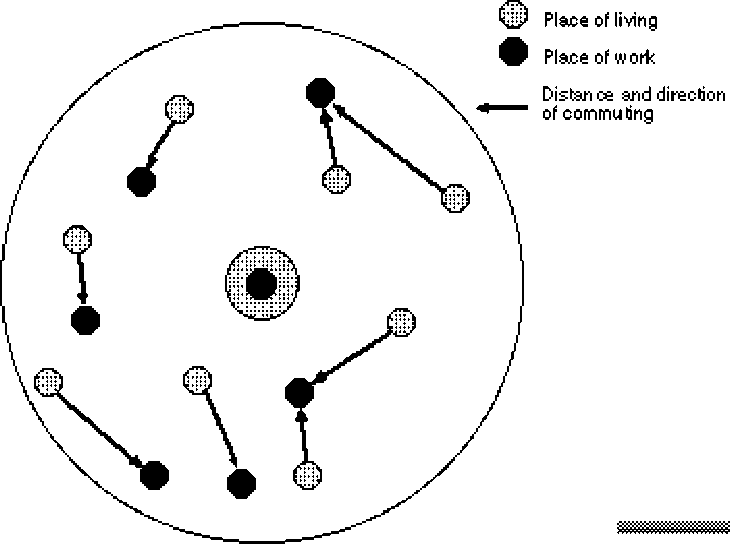5.
The Cross-traffic Model
Figure 4 The direction of commuting in the case of cross commuting
MULTIDIRECTION MODEL

The second model of deconcentrated employment still presumes that commuter traffic is
directed towards the centre of the urban region: the employment location is found on the
radial between the place of residence and the centre of the urban region. It is in this indirect
way that the place of residence concentrates on the city centre. As mentioned in the
introduction of this article there is, in addition to the radial commuting traffic, increasingly
transversal commuting in urban systems. It is possible to compute the average commuting
distance starting from this type of transversal cross commuting relations while maintaining
the other presuppositions of the monocentric model. In this so-called cross-traffic model the
urban region is truly polynodal in character. Commuting is no longer centre-oriented as, in
the direct sense, in the concentrated model or, indirect, as in the deconcentrated one. The
cross-traffic model assumes that commuters are oriented at the nearest-by municipality. This
choice for the nearest-by municipality is based on two assumptions. The first is that, a
potential commuter has to commute. This, as such trivial statement, prevents that a
potential commuter is oriented at the municipality of living. The second assumption is that
commuting is undertaken with a minimization of costs. This assumption prevents that
commuters will orientate themselves randomly throughout the daily urban system or at
13
More intriguing information
1. Imputing Dairy Producers' Quota Discount Rate Using the Individual Export Milk Program in Quebec2. Internationalization of Universities as Internationalization of Bildung
3. The name is absent
4. A production model and maintenance planning model for the process industry
5. The name is absent
6. The name is absent
7. Investment and Interest Rate Policy in the Open Economy
8. Testing the Information Matrix Equality with Robust Estimators
9. Voluntary Teaming and Effort
10. The name is absent